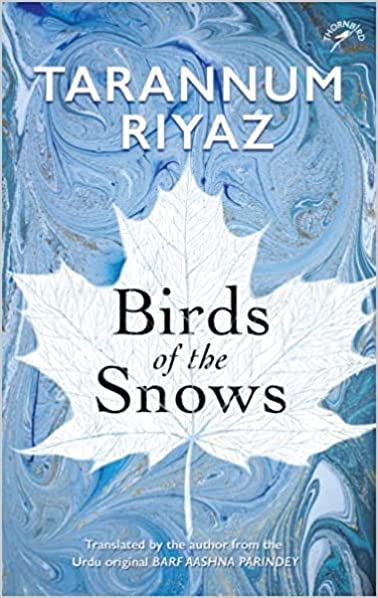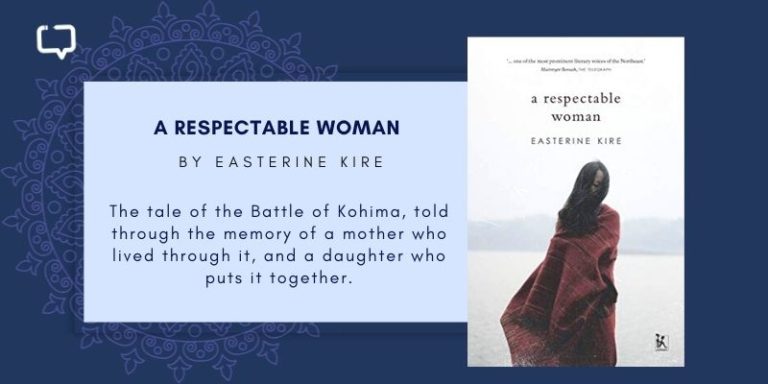Birds of the Snows is a story of Kashmir and its people, but also of a woman’s struggle to break from the clutches of patriarchy.
Translated by noted Kashmiri writer, critic, and poet Dr. Tarannum Riyaz from the Urdu original Barf Aashna Parindey, Birds of the Snows traces the story of a family in Kashmir, particularly that of their youngest daughter Sheba. Unlike her two elder sisters, six-year-old Sheba does not like playing with dolls, and instead enjoys studying. She goes onto receive a scholarship from an out-of-state university, and her family allows her to go—somewhat of an anomaly in itself during a time when the book is set. While her sisters feel there is no need for her to work once she grows older, Sheba wants to make something out of her life on her own—whether in the form of a job, as a teacher or a researcher. She begins to complete her doctorate in sociology under the guidance of a brilliant sociologist, Professor Daanish.
We encourage you to buy books from a local bookstore. If that is not possible, please use the links on the page and support us. Thank you.
When Professor Daanish falls sick, Sheba along with four of her classmates, begin nursing him. At a seminar, Sheba meets and falls in love with Shahaab-u-din Sherwani, a university professor, but realises that he is already married to his cousin. Soon, her best friend, Mayuri, gets married and moves away to London. Over a period of time, most of Sheba’s fellow students gradually move away in different directions where life takes them—leaving Sheba all alone to take care of their ailing professor.
Visions of Kashmir
The prose is filled with evocative glimpses of childhood in Kashmir, bringing up a treasure of memories consisting of siblings, cousins, summer vacations, food, birds and trees belonging to the region. Along the way, the author also recounts the history of the pristine Kashmir Valley, highlighting countless stories related to its history, cultural heritage, customs, localised folktales, myths and legends. Through rich descriptions, the book paints vivid images of different aspects of Kashmir and the beauty of its nature in the reader’s mind.
“Autumn brings rouge from the skies for my beautiful Valley; the green of the chinars turns
to crimson and orange, which looks like some yet unseen part of heaven against the
background of the blue sky. Snowbirds with snow feathers of vibrant colours visit to bless it
with the pride and pleasure of being their host. When the snows accompanying the bluish
clouds come to its many valleys, hills and waters, its rivers and springs dance and its lakes
sparkle like quicksilver.”
Several kinds of trees found in the Valley are referred to periodically, such as fig, chinar, peach, willow, apple, pine, cypress, rosewood, sheesham, peepal, banyan, neem, birch, apricot, poplar, mulberry, walnut, plum, gulmohur, marigold, poppy and cherry.
As the book’s title suggests, references are also made routinely to many varieties of birds found in the region, such as doves, bulbuls, owls, parrots, mynahs, larks, swallows and peacocks. The author often uses them as similies, and at one point, even compares snowflakes to “the wings of wild pigeons, like the feathers of water birds or wild ducks.” Other symbols intrinsic to Kashmiri lifestyle, such as shahtoosh, pashmina, qehwa, pheran, loyee, kangri, samovar, bukhaari, khadoon, girda, sheermal and tsochwour also find mention in the book from time to time. Needless to say, the book also talks about present-day issues related to Kashmir’s politics, religion and militancy working under the garb of ‘struggle for freedom’.
Tale of an Era
Birds of the Snows is set in a time when various social mores and other practices were prevalent. For instance, hunting animals was common and acceptable. The beating of students was not considered a violation of human rights. The state of women was particularly backward. The purdah system existed. Marrying off girls while they were still studying in school was also not frowned upon. Marrying someone of one’s choice was also rare. Sheba’s elder sister, Farkhanda, apparently has a love marriage, which in itself is considered sensational in those days. Further, women’s education was not taken seriously, which is why when Sheba’s family supports her decision to study further instead of settling down, it was a rather unusual step in those days. Farkhanda even warns Sheba that good families do not like their women going out for work.
Conclusion
All in all, the book is a young woman’s journey for freedom of choice and personal liberation amidst a changing society in Kashmir over the years. The novel is also like a mix of several tiny stories within one big story—of the family and its central characters. Different facets of the state—both good and bad—are brought about along the way. Overall, the story with its characters and the gentle flow of its language makes for a compelling, almost addictive, read.
Best Quotes
The sadness brought by art has a strange magical power in it, which compels you to experience the same sadness again, the same way that you are attracted by its pleasant passages.





















